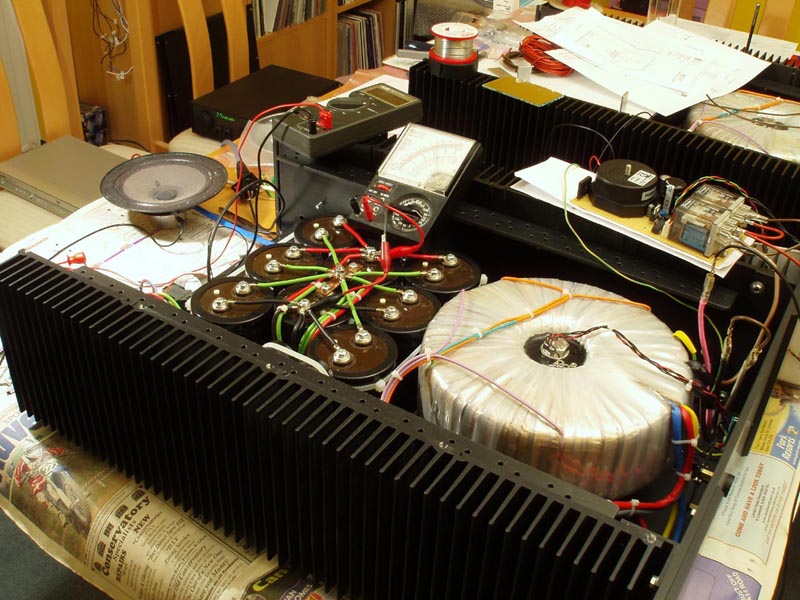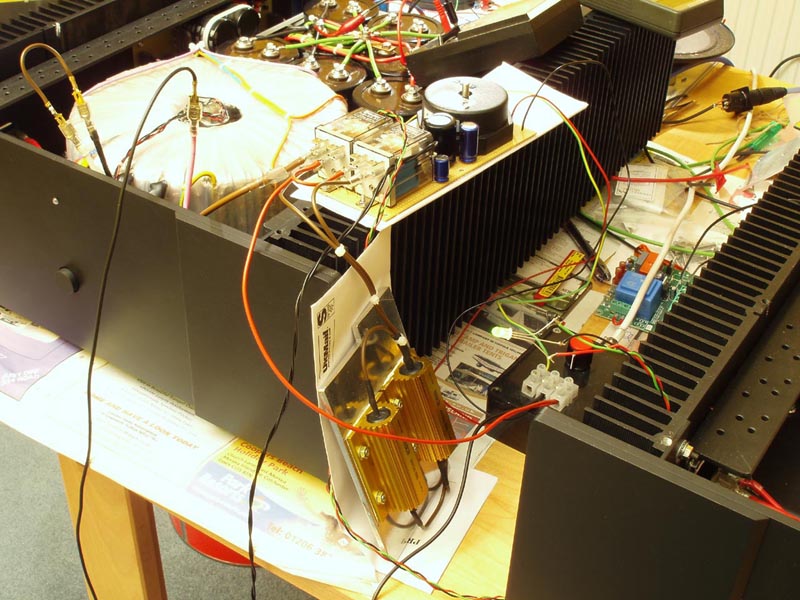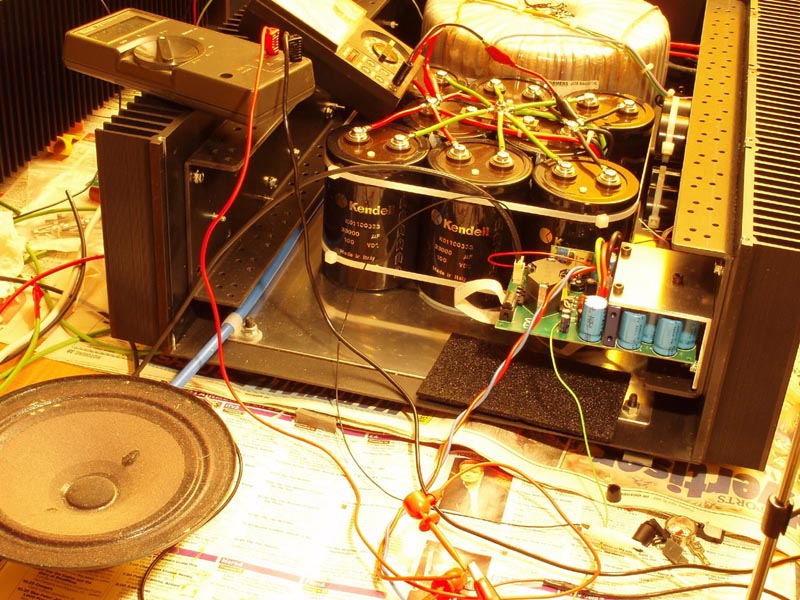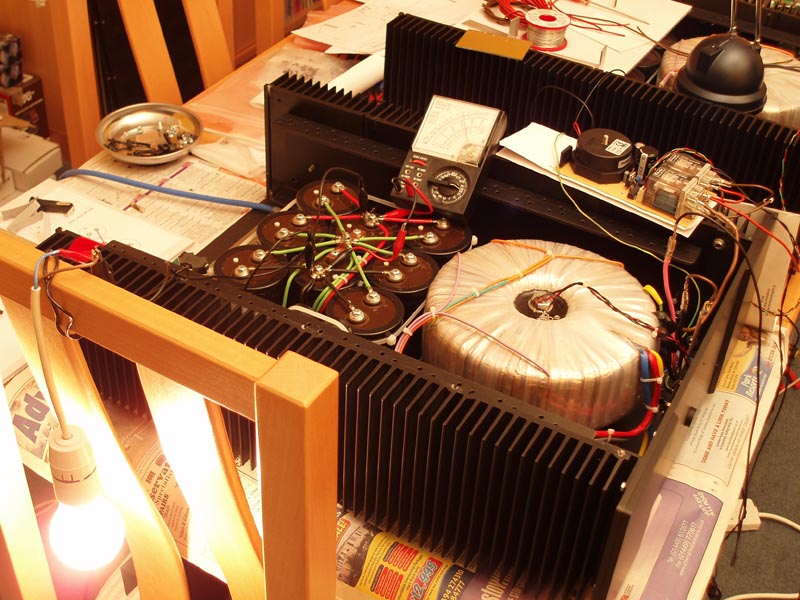Building a Hypex UcD700-based power amp
With all the sub-systems completed/tested in isolation over a period of about nine months, it was certainly a big
occasion once it was time to switch on the whole thing. As I discovered with the soft start, it's a bit inconvenient
to have everything neatly (one hopes) wired in and fitted, only to discover that you've got to take it back out and redesign it.
This is where the confines of the chassis made themselves felt because I really didn't want to strip down (both) chassis
just to change the soft start modules. A bit like trying to change a steering rack with the engine still in the car, I
suppose!
So, in this series of shots, the amp is just lashed together and connected up from line-in to speaker-out:
So, in this series of shots, the amp is just lashed together and connected up from line-in to speaker-out:

Again, I was pleasantly surprised that, switch-on was totally undramatic. The soft start did its job. The amp module un-muted itself with a barely audible click about a second after the soft start bypass relay clicked in and the amp itself was very quiet.

Test speaker was just an old (expendable) unit I had lying around. Source was a CD via a cheap DVD player into a Nac62.

The only thing of note was the terrible hum if the pre-amp was off but still connected to the power-amp. This could probably have been fixed if the chassis was floating and not connected to mains earth (Hypex recommend building the amp double-insulated). However, this was not something I would ever feel comfortable with, depite adhering to the recommended 8mm 'creep' distances between mains carrying parts and chassis.
Connecting the metalwork of the input socket to the chassis certainly helped (as it would be in final assembly). Connecting the signal earth (i.e. the central earth point) to chassis earth would probably eliminate the remaining hum, but only for one amp - you can't wire both amps this way.
Luckily fitting an earth-lifted connection between these two points pretty much did the trick (10R - 20R resistor in parallel with a 0.1uf capacitor). For good measure I included a bridge rectifier for added safety (as recommended by Rod Eliot - see using a 'loop breaker' circuit). At the stage I haven't completed the other channel, but hopefully this should work.

This last shot shows use of the 60W-light-bulb-trick for discharging the capacitors - probably safer than using resistors. The meter is reading about 165V.